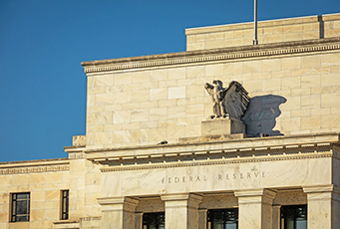Guessing the direction interest rates will take is difficult – even for the experts. But our current economic environment indicates interest rates could continue to rise this year. Whether you’re a borrower or an investor, you need to understand the financial risks involved.
Thus far in January, the interest rate for a 10-year U.S. Treasury bond has risen about 0.25 percent. As a result, the average bond has lost about 1 percent. (Barclay’s Aggregate Index) That may not sound like much, but losing 1 percent in three weeks is a sizeable move in the typically slow-moving world of bonds.
Why Interest Rates May Continue Rising
The domestic economy is growing at about 3 percent. In addition, there are other signs of improvement. Plus, we have a new tax plan that is likely to accelerate growth, at least in the short-term. As a result, we’re seeing growth at or above the long-term average during a time of well-below-average interest rates. Historically, this combination has occurred infrequently.
The global economy is also growing better than expected. Every one of the 45 largest economies is expanding. According to Josh Zumbrin of the Wall Street Journal and the OECD (Organization for Economic Cooperation and Development), this hasn’t happened since 2004 - 2007. Clearly, the accommodative stances (e.g. lower interest rates) taken by the world’s central banks are no longer as necessary. The U.S. began tightening interest rates in 2016. If they haven’t already done so, the world’s central banks will likely follow suit in 2018.
Unemployment is low and presumably can’t get much lower. With a strong economy and low unemployment, the pressure to increase wages is bound to intensify. Wage inflation could potentially lead to higher overall inflation. This scenario would encourage the Federal Reserve to raise rates even higher than it had originally planned.
The Fed is already suggesting we’ll see three interest rate increases in 2018 to its key rate. Market experts are skeptical that this will actually occur. However, the Fed has the potential to surprise the market. And when it does, rates can move quickly and market values can fluctuate significantly as future expectations adjust to a new norm.
What’s the Impact on Long-Term Bonds?
If you’re concerned about rising rates, you’ll want to avoid long-term bonds such as the German Bund, as well as low-yielding bonds, like U.S. Treasuries or developed countries’ sovereign debt. You definitely want to stay clear from 30-year U.S. Treasury bonds! Why? If the interest rate on a 30-year Treasury bond were to rise 1 percent, its value could fall by 20 percent (Market Data Center from The Wall Street Journal). The payout on this bond is only 2.9 percent. It would take a long time to break even after a 20 percent loss!
What Bonds Hold Their Own?
Short-term maturity bonds are often sheltered from the impact of rising rates. If rates rise, your bond matures soon and you can quickly buy a new bond at a higher rate, then you could be earning higher yields faster. Floating-rate bonds could also be an attractive investment. Their yields reset periodically to match the movement of underlying rates, such as the prime or the LIBOR (London Interbank Offered Rate).
What Bonds Might Actually Do Well?
No bond is guaranteed to do well when rates rise. However, it’s possible that foreign bonds may weather an interest rate increase better than domestic bonds. Why? They are affected by currency fluctuations, which can influence returns (for good or bad), and their own domestic interest rate movements. This month can serve as a good example. As U.S. bonds have declined and the dollar has lost value, most foreign bonds have seen gains.
Higher-yielding corporate bonds can benefit from rate increases, if rates are rising due to improving economic conditions. Struggling companies that issue high-yield bonds have an easier road during times of strong economic growth. The loss from rising interest rates can be offset by the presumed increase in security of the issuing corporation. In bond jargon, a BB rated bond that is upgraded to BBB will get a bump in price, all else being equal.
Summary: Advice for Investors and Borrowers
If you’re an investor, you need to be comfortable with what you own and the risks you’re taking. A diversified portfolio that includes floating-rate bonds and foreign bonds could help alleviate risks associated with rising domestic rates. These investments carry their own unique risks, so be sure to understand those before making changes.
If you’re a borrower, take the opposite strategy. Be willing to lock in rates today for longer periods and avoid floating rates tied to the prime or LIBOR. If rates rise, you could be saving on interest payments for a long time!
Prior to implementing any investment strategy referenced in this article, either directly or indirectly, please discuss with your investment advisor to determine its applicability. Any corresponding discussion with a Bedel Financial Consulting, Inc. associate pertaining to this article does not serve as personalized investment advice and should not be considered as such.
Recommended Articles
Private Equity and M&A in a Low-Rate World
Deal flow is the stream of business proposals, investment...
The Bonds that Tie – An Exciting Look at Fixed Income
With today’s yields being much higher than the close to...





